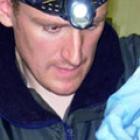Get access to all handy features included in the IVIS website
- Get unlimited access to books, proceedings and journals.
- Get access to a global catalogue of meetings, on-site and online courses, webinars and educational videos.
- Bookmark your favorite articles in My Library for future reading.
- Save future meetings and courses in My Calendar and My e-Learning.
- Ask authors questions and read what others have to say.
How to perform and interpret oroscopy
Get access to all handy features included in the IVIS website
- Get unlimited access to books, proceedings and journals.
- Get access to a global catalogue of meetings, on-site and online courses, webinars and educational videos.
- Bookmark your favorite articles in My Library for future reading.
- Save future meetings and courses in My Calendar and My e-Learning.
- Ask authors questions and read what others have to say.
Read
A thorough oral examination and diagnosis is a precursor to any treatment in equine dentistry. By ensuring an accurate diagnosis appropriate treatment/procedures can be selected and carried out. The use of full mouth speculae, bright headlights and dental mirrors have become commonplace in the past 15 years.
Dental endoscopy is a more recent addition to the pool of diagnostic techniques available to the equine veterinary surgeon. The benefits are the ability to explore the oral cavity and produce a greatly magnified image, which can be a great asset in educating and engaging students, staff and clients as well as allowing detailed records to be kept in the form of video or stills. Peer-reviewed studies have shown that there is an increase in recognition of dental pathology using oral endoscopes when compared to traditional techniques (Ramzan 2009) as well as being shown to be useful in performing advanced dental procedures within the equine oral cavity. The magnified image can allow great precision in positioning instruments within the mouth.
Whilst dental endoscopy can and has been performed with flexible endoscopes, their delicate nature as well as the difficulty in controlling the instrument within the oral cavity makes their regular use unsuitable. Rigid telescopes are far more suitable, more easily controlled and are less likely to be damaged by the dentition.
Units available range from self contained borescope systems, through optical laparoscope/borescopes to dedicated wireless units. Costs of current units can range from £650 - £6500. The most used systems comprise an optical telescope, light source and camera system. For practices performing laparoscopy or arthroscopy it is possible to use the share equipment towers depending on sterility. More portable systems involving USB cameras and laptops, or wireless systems with laptops or tablets are available and favoured by many practitioners for their portability.
The most commonly used diameter, length and angle of scope is 8-10mm, 40-45cm and 70 degrees. This gives the sufficient reach in the mouth and the most direct visualization of the occlusal surface due to the position of the opening of the oral cavity in relation to the teeth. These scopes tend to be designed specifically for oral endoscopy and can be expensive. Non-medical borescopes can be very useful although water ingress can present a problem for long term use or if inadvertantly autoclaved. Human bariatric laparoscopes are available in 0, 30 and 45 degree angles and reconditioned instruments are widely available and cost effective alternatives. The 45 degree scope is a good compromise and has superb image quality but can be limited when visualising deep within alveoli and interpoximal spaces. A 0 degree scope can be useful in cases when mouth opening is extremely limited or where visualization of occlusal overgrowths is required. Most self-contained units tend to give a 90degree angle of view which perfectly useable but not quite as useful as the 70 degree. Larger diameter instruments whilst tempting due their increased robustness tend to be less maneuverable within the oral cavity and therefore less useful.
Oral endoscopy requires the patient to be well sedated, preferably within stocks. Due to the magnification, visualization of the oral structures is very challenging if there are even small movements. For this reason higher doses of sedation may be required to decrease chewing and reduce tongue movement. Occasionally, use of diazepam to decrease tongue movement is necessary, although this can increase ataxia. Spraying the oral cavity with lignocaine can help decrease sensitivity and reduce movement during endoscopy.
The patients head should be supported using a headstand at a comfortable height for the clinician, usually just above their waist height. The scope is then controlled using both hands. One hand acts as a pivot stabilized against the speculum whilst the other hand manipulates the scope. The image is viewed on the screen. There is a learning curve involved in developing the hand eye co-ordination to control the scope effectively in the mouth.
[...]
Get access to all handy features included in the IVIS website
- Get unlimited access to books, proceedings and journals.
- Get access to a global catalogue of meetings, on-site and online courses, webinars and educational videos.
- Bookmark your favorite articles in My Library for future reading.
- Save future meetings and courses in My Calendar and My e-Learning.
- Ask authors questions and read what others have to say.



Comments (0)
Ask the author
0 comments